Food and Drink: Did You Know?
Banquet CultureElaborate banquets are a part of Chinese culture, and represent a long historical tradition. Often featuring 10 or more courses, these are not only culinary events but also social gatherings, reflecting the Chinese adage, "Food is the first necessity of the people." ▶ |
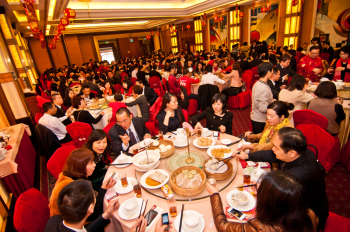 |
Yin and Yang FoodsChinese food is prepared and served according to the Chinese philosophy of balancing yin and yang. Foods and cooking methods are distinguished as having yin or yang properties, and meals attempt to find balance by providing various dishes of each type. Yin foods are generally bitter, salty and sour, while yang foods are generally sweet and pungent.
In the same way, the teachings of Confucius are central to Chinese cuisine. Born Kong Qiu, Confucius wrote extensively on cooking and dining, and his philosophy that food and friends are inseparable parts of life permeates Chinese culture. ▶ |
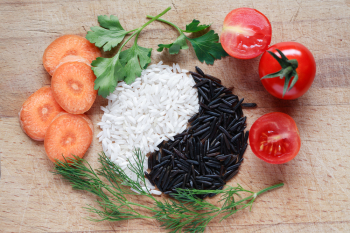 |
Business DrinkingDrinking is an integral part of business dinners in China. The willingness to drink alcohol, or even get drunk, with business associates is considered essential to strengthening social relationships, which are central to business dealings. Drinking alcohol is also believed to reveal a truer self, and proves trustworthiness. ▶ |
 |
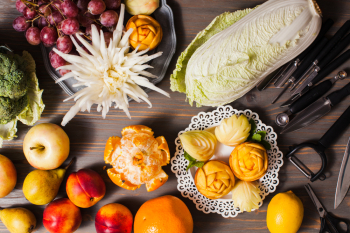 |
Food as Art◀ Presentation is crucial in Chinese cuisine, with an emphasis on color, shape, and aroma that is intended to represent nature. Food is often carved and arranged to resemble animals, flowers, or other intricate designs to denote cultural significance and aesthetic value. |
Eight Great CuisinesChinese food experts have identified eight culinary traditions. These include Sichuan, Cantonese, Jiangsu, Shandong, Fujian, Hunan, Anhui, and Zhejiang cuisines. Each is distinct and uses local ingredients, techniques, and flavors. ▶ |
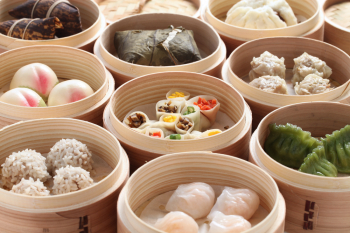 |
Chopstick HistoryChopsticks are believed to have originated in China around 5,000 years ago. They were initially used as cooking utensils, in the form of a simple twig used to fish food out of cooking pots. The first examples of chopsticks date back to around 1200 BCE and were discovered in the Henan province of China. ▶ |
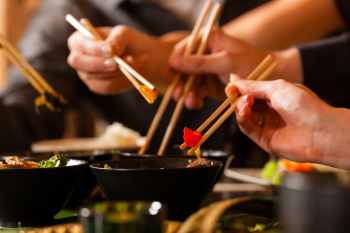 |
Tea CultureChina is the birthplace of tea, and it is as central to Chinese dining as the food. Tea is thought to aid digestion and is typically served before, during, and after meals without sugar or milk. Tea also plays a profound role in social gatherings as a way of showing hospitality. ▶ |
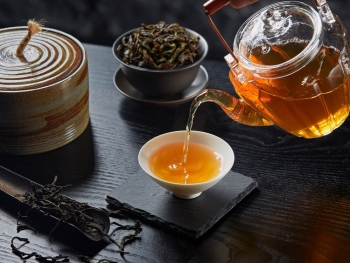 |
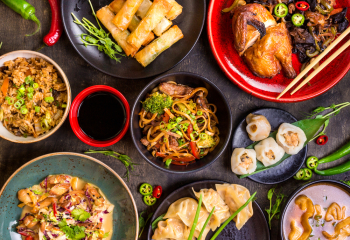 |
Historical Roots◀ Chinese cuisine is one of the oldest and most diverse in the world, with written records dating back to the Shang dynasty (1600-1046 BCE) and culinary techniques that have been refined over centuries. |
Waste NotWasting food is a big taboo in China. In food preparation, all parts of vegetables or animals must be used during cooking. To combat food waste, Chinese restaurants have the right to charge an extra fee to any patron who leaves excessive quantities of uneaten food. ▶ |
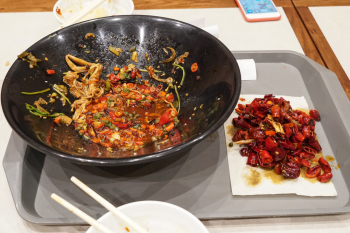 |
Symbolic FoodsMany Chinese dishes are eaten for their symbolic meanings. Fish, which sounds like "surplus" in Chinese, is eaten during New Year's for prosperity, and noodles represent longevity and good health. Spring rolls look similar to gold bars, so they are often made for Lunar New Year, and dumplings represent wealth as they resemble money bags or ancient Chinese currency. In addition, oranges have a long history symbolizing fortune and abundance. ▶ |
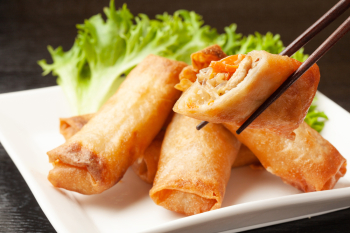 |
Fans of FermentationChina has a long history of fermenting food, using techniques to preserve foods and enhance flavors. Foods like soy sauce, black vinegar, fermented tofu, and pickled vegetables are staples in Chinese cooking. Fermented fish and seafood, and fermented milk products are other popular products. ▶ |
 |
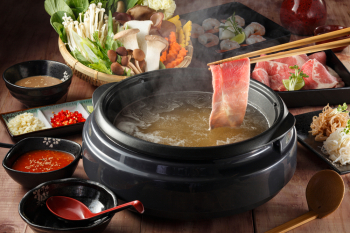 |
Hot Pot◀ Well known in China for about two thousand years, hot pot involves cooking a variety of raw ingredients in a shared pot of broth. According to legend, Mongols used their helmets as vessels to simmer broth over open fires, and cooked chunks of meat in the broth. |
Street Food SceneStreet food is an integral part of Chinese eating culture, stemming from the Tang dynasty (618–907 CE). The street food culture of much of Southeast Asia was established by workers imported from China during the late 19th century. Popular Chinese street food includes baozi (steamed stuffed buns), stinky tofu, dumplings, lamb kebabs, fried rice cakes, and candied fruit on a stick. ▶ |
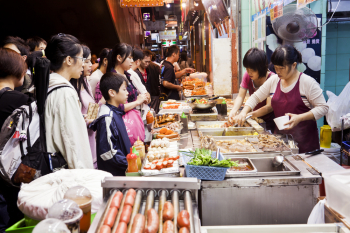 |
Moon Festival MunchieChina's Mid-Autumn (or Moon Festival) is celebrated with mooncakes. The dense, sweet pastries are typically filled with sweet bean paste, egg yolk, meat, or lotus seed paste. In Chinese culture, a round shape symbolizes completeness and reunion, with sharing mooncakes among family members a meaningful tradition. ▶ |
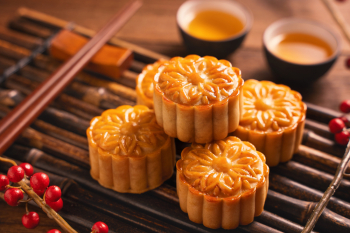 |
Fast Food FocusDespite its rich culinary traditions, modern China is one of the largest consumers of fast food worldwide, a testament to the rapid urbanization and globalization affecting the country. McDonald's, KFC, and Burger King have the most market share in China. ▶ |
 |
Copyright © 1993—2025 World Trade Press. All rights reserved.

 China
China